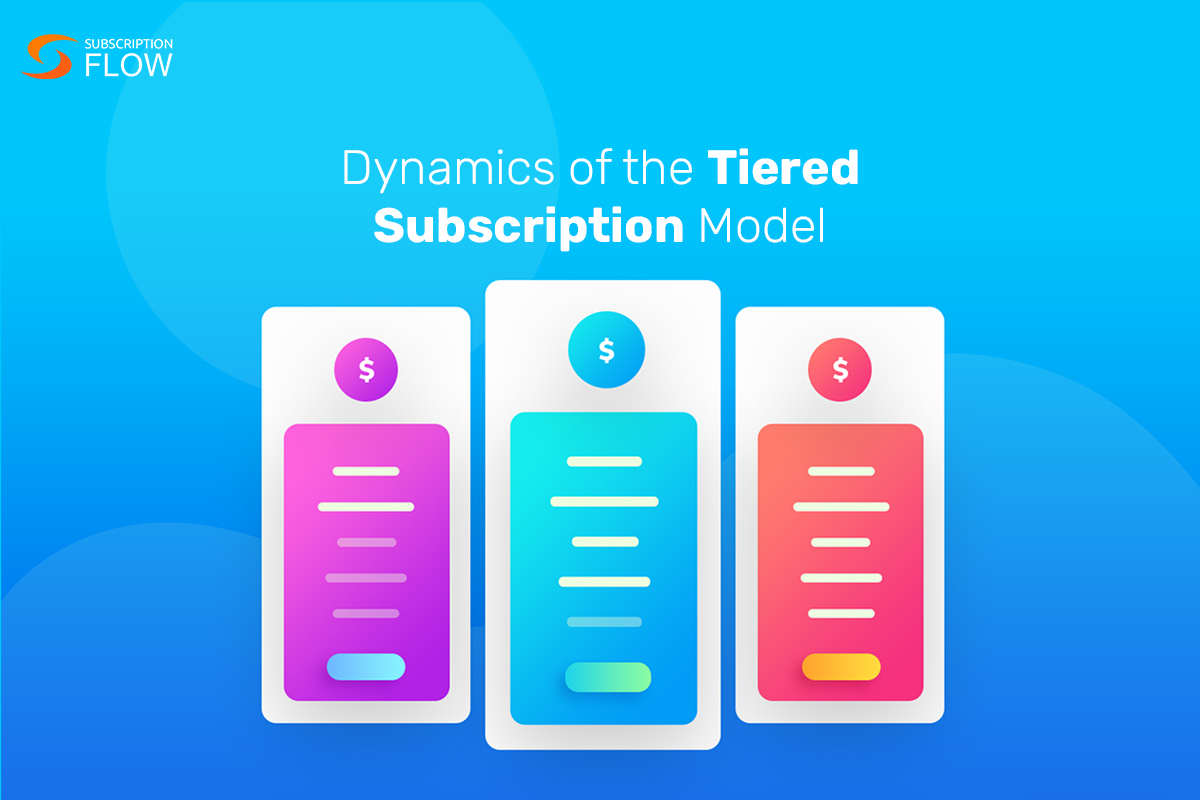
The Dynamics of the Tiered Subscription Model Explained
Would you pay for Netflix if it only had one pricing plan which cost $20 per month and yet gave you access to every single feature that the streaming service has to offer? Or would you prefer having multiple options besides the $20 plan – a $10 plan that gives you access to half the features and a $15 plan that gives you access to most but not all the features – so that you could choose which plan may be better for you? And statistics show that businesses are 50% more likely to attract and retain new subscribers if they adopt a tiered subscription model since otherwise it is very difficult (and mostly costly) to implement a one-size-fits-all strategy.
You are not alone in feeling so positively about being spoilt for choice in terms of choosing a pricing plan to subscribe to. Having multiple pricing options with each unlocking varying levels of access to the product is called tiered pricing.
What is the tiered subscription model?
Having a tiered subscription model is a pricing technique employed by businesses, particularly in subscription-based models, in which the cost of a product or service is divided into several levels or tiers, each giving a unique set of features or advantages at varied price points. Customers may select the tier that best meets their demands and budget, providing flexibility and scalability while also promoting higher-value plans with greater functionality or larger use restrictions.
Read more: Beyond One-Size-Fits-All: Tiered Pricing Examples
Who benefits the most from the multi-tiered subscription model?
Having a multi-tiered subscription model supports a diverse variety of customers and businesses by accommodating varying demands and preferences. Tiered pricing is typically useful for small enterprises and startups since it gives an entry-level choice that is cost-effective and provides key features to jumpstart their operations without significant financial pressure. This allows them to have access to vital features while being cost-effective.
Bigger businesses, on the other hand, benefit from tiered pricing by having the option to select higher tiers that offer additional functionality, increased use restrictions, and better support, corresponding with their more sophisticated requirements and bigger budgets. This guarantees that clients obtain customized solutions that adapt to their complex operations and allow them to fully use the given services. Overall, tiered pricing is a dynamic technique that accommodates organizations of all sizes, finances, and operational complexities, ensuring that each client finds an appropriate plan that matches their individual demands.
Benefits of the Tiered Subscription Model
1. Cost Flexibility and Efficiency
Cost is the biggest selling point of companies that offer tiered billing. It makes sense for small businesses and startups to flock to even subscription management services that operate on the tiered billing model because, in doing so, they get the liberty to choose which tier they can afford. 2022 has already been dubbed the year of canceled subscriptions with people canceling subscriptions twice as fast as they are taking in new ones, and so businesses too need to make sure that they are streamlining their business with the help of a service that they can afford over the long run.
SubscriptionFlow can be of great assistance to you in this regard. It offers 4 affordable tiers of subscriptions which are as follows:
- Starter ($99/month)
- Rise ($149/month)
- Scale ($249/month)
- Enterprise (custom)
SubscriptionFlow even includes a lot of prized features in its Starter subscription such as customer self-service portals, chargeback automation, and usage-based pricing, among others. The inclusion of these in the Starter subscription tier, and the inclusion of further complicated services, gives the business the power to discern if their business needs these features or not and then decide on the basis of that if they wish to pay for the service or not.
2. Scalability and Customization
CRM requirements keep changing as firms grow. Tiered charging allows for this scalability by giving higher tiers with more complex features, larger use limitations, and improved support. As a result, organizations may smoothly convert to more extensive plans as they develop, ensuring that the CRM system stays successful throughout their growth path.
Furthermore, businesses often have demands that cannot be met by subscribing to just one tier of the subscription management software, and this is why tiered billing CRMs allow for adaptability. Businesses are given the option to select the tier that best meets their needs, eliminating excessive costs for capabilities they do not want. This tailored strategy improves CRM productivity by offering exactly what the organization needs, thereby fostering simplified processes.
SubscriptionFlow understands this need and implements it in its subscription offerings by allowing increased levels of customization to its dashboard and by giving its users the option to design custom plans for themselves that include (but are not limited to) flat-fee, tiered, volume, and usage-based among others. The flexibility to fluidly move between different not only different tiers but also various features is a boon that can and should be incorporated into the tiered subscription model that is being offered.
3. Value for Money
Ultimately, choosing one tier of subscription management over the other is all a matter of you calculating which tier will give you the biggest return on investment (ROI). Tiered charging enables enterprises to assess the return on their investment. Customers may select the tier that provides the most relevant features for their industry, size, and ambitions. This value-based strategy guarantees that firms utilize the benefits of their selected CRM, resulting in higher ROI.
This is why SubscriptionFlow focuses so much on having a smooth onboarding process that helps businesses understand exactly what kind of services they require, how should they integrate it with their current tech stack, and how, if needed, they should go about upgrading to the more expensive tiers that offer more services.
Read more: Discover the Perfect Chargify Alternative: SubscriptionFlow
The bottom line
In today’s environment of automation and different customer wants, tiered pricing emerges as a strategic masterpiece. Tiered pricing, as seen in the field of subscription management services, provides a variety of benefits that cater to enterprises of varying sizes and complexities. Small companies and startups benefit from the cost flexibility and efficiency provided by tiered pricing, which allows them to select a plan that fits their budget and requirements. Larger organizations, on the other hand, benefit from the scalability and customization provided by higher levels, ensuring that the CRM system advances in tandem with its growth trajectory.
Notably, tiered pricing outperforms in terms of value for money. Businesses may customize their subscription plans to their unique sector and goals, maximizing their investment and achieving greater returns. These benefits are shown by the multi-tiered subscription model offered by SubscriptionFlow, which includes not just a broad choice of varying price levels but also personalized features and configurable dashboard options. Finally, implementing a multi-tiered subscription model is a dynamic solution that enables businesses to make educated decisions, expand their operations effectively, and get the most out of their CRM system.
Book a demo with SubscriptionFlow to find a subscription tier that offers what your business needs!










